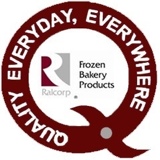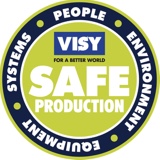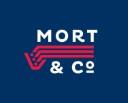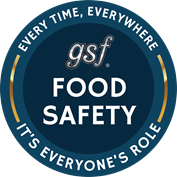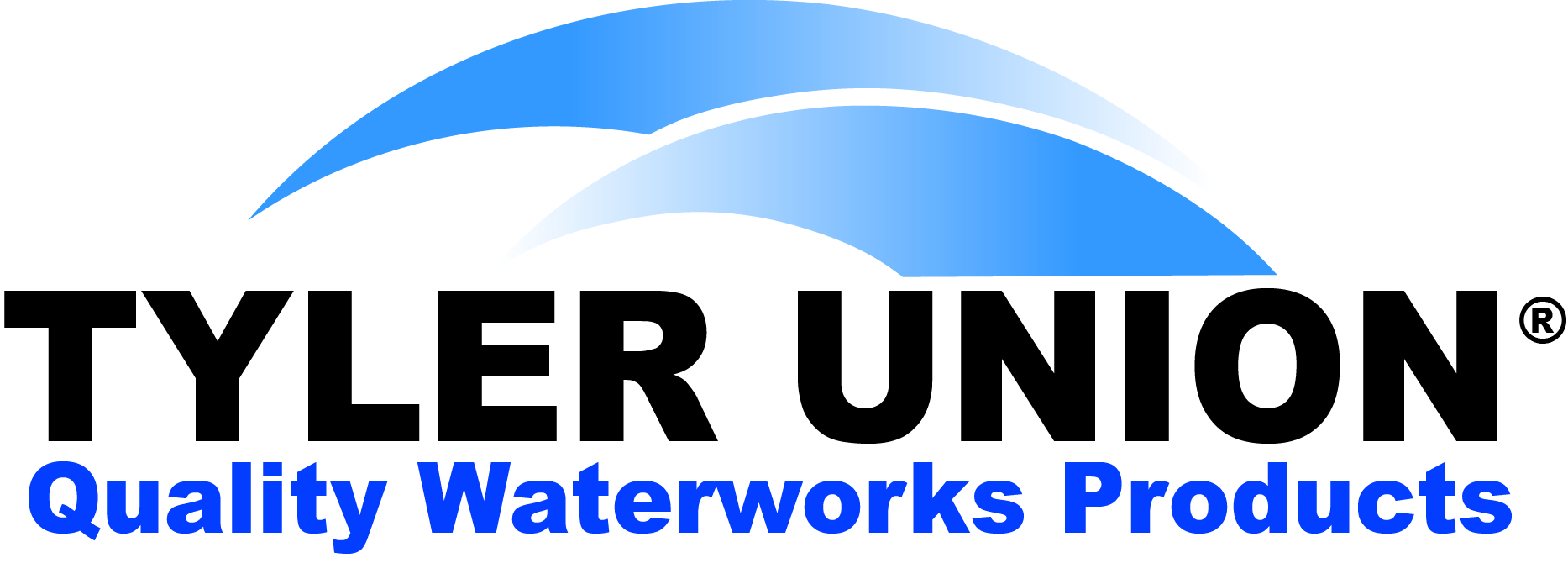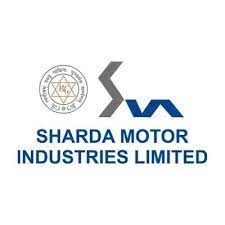Information
-
Document No.
-
Audit Title
-
Client / Site
-
Conducted on
-
Prepared by
-
Location
-
Personnel
General Information
-
Risk Category
-
Reason for Audit
Audit Results
-
Supplier Status
-
Auditor Comments:
-
Re Audit Date
Quality Systems
-
Is there a Quality System in place
-
Is the Quality System Adequately Communicated to all appropriate Levels
-
a) Is the Quality System Evaluated at a Routine Frequency: Ingredient and direct packing(annually) increased Frequency May be required by use of Risk Factors: Volume, region, Single Source, Regulatory, Microbial Risk, Third Party Audit Results below Ralcorp Requirements, CA follow up, other noted by Ralcorp Auditor.<br>b) Self Inspection Criteria monitor<br>i) Facility Sanitation<br>ii) Facility Quality Programs<br>iii) GMP and Personnel Practices<br>iv) HACCP and Control Point Management<br>v) Facility Infrastructure and Maintenance
-
Documentation of the Quality System Shall thereafter be supplied to Ralcorp via iCIX checklist. It also Shall be updated and sent to Ralcorp anytime that a Quality program, which requires documentation changes occurs or annually from the submission date, whichever comes first.
Training
-
A Supplier/ Vendor Shall ensure that employees are knowledgable regarding current Quality, Food Safety and Good Manufacturing Practices applicable to their respective responsibilities.
-
A Supplier Shall maintain a documented new employee training program for Quality and Food Safety ( HACCP, Allergens, GMP's, Sanitation and Quality Procedures).
-
A Supplier Shall conduct documented annual employee training program for Quality and Food Safety ( HACCP, Allergens, GMP's, Sanitation and Quality Procedures).
Preventative Maintenance
-
A Supplier Shall maintain a documented Preventive Maintenance Program. This program Shall identify key equipment in the manufacturing process and have documented procedures detailing calibration frequencies, tolerances and corrective actions.
Traceability/Recall/Crisis Management
-
A supplier shall have a traceability program in place that tracks history of the product from receipt of raw materials to specific finished lots delivered to Ralcorp.
-
A supplier traceability program shall include and account for:<br>i) Raw Materials<br>ii) Finished Product<br>iii) Rework<br>iv) Product on hold<br>v) Product in transit / storage
-
A Supplier Shall verify the effectiveness of the traceability program for raw materials on a minimum of a quarterly basis using a "Mock Trace".
-
A Supplier Shall verify the effectiveness of the traceability program for Finished Goods on a minimum of a annual basis using a "Mock Trace".
-
Accuracy of the program Shall be 100% +/-1%. This "Mock Trace" should consider plant standards for present yield and efficiencies.
-
Required completion of recall Shall be a Maximum of 4 hours for completed traceability.
-
A Supplier Shall have a unique number system that is traceable in documentation that identifies a specific production lot and it's production history.
-
A Supplier Shall submit to Ralcorp an Explanation / interpretation of the actual coding legend for each product ( and from each plant if the coding differs between plants ). If coding on the outer packaging /case is different than the coding on the individual packaging, both Shall be provided to Ralcorp.
-
A Supplier Shall have a documented Recall Plan in place.
-
A Supplier Shall have a documented Crisis Management Plan in place.
Functioning HACCP*
-
1) A supplier SHALL have HACCP plans for all products produced for Ralcorp, or alternatively SHALL be able to demonstrate the lack of risk or hazard.
-
2) A supplier SHALL have a HACCP plan that is in accordance with Codex, National Advisory Committee on Microbiological Criteria (NACMCF), FDA and/or CFIA guidelines.<br>a) HACCP Plans are specific for each production line, process and/or type of product. Each plan SHALL address microbiological, chemical and physical hazards associated with each production line, process and/or type of product.<br>b) Content of the HACCP plan SHALL include:<br>i) A documented hazard analysis.<br>ii) Determination of Critical Control Points (CCP's).<br>iii) Establishment of critical limits for Food Safety.<br>iv) Establishment of monitoring procedures for each CCP.<br>v) Establishment of corrective action to be taken when a critical limit deviation occurs.<br>vi) Establishment of a record‐keeping system.<br>vii) Establishment of verification / validation procedures.<br>c) HACCP plans SHALL also include the following documentation.<br>i) Process flow charts for each production line, process and/or type of product.<br>ii) A facility Master HACCP Plan showing points b(ii) through b(vii)7 listed above.<br>iii) A HACCP deviation and corrective action log.<br>iv) CCP records.<br>v) Revision Log.
-
3) A supplier SHALL provide annual training on the prerequisite programs to support the HACCP Plan.
-
4) A supplier SHALL not permit product to leave their control until HACCP documents are reviewed, the applicable process was monitored in accordance with the HACCP plan, and verification that critical limit deviations were handled in accordance with the HACCP plan has been completed.
-
5) A supplier SHALL have its HACCP plan reviewed on an annual basis by a qualified agency (e.g. AIB, Silliker,<br>NSF‐Cook & Thurber, GMA/FPA Safe) or as part of a recognized GFSI certification (e.g. SQF)
Foreign Material Control
-
1) A supplier SHALL have programs in place to prevent chemical and physical contamination of materials that may not be covered by a general HACCP Plan.<br>2) Chemical Control Program<br>a) A Hazard analysis must be conducted to address risks associated with non‐industrial chemicals including:<br>i) Naturally occurring chemicals (toxins, alkaloids, etc.)<br>ii) Agricultural (insecticides, fungicides, herbicides, etc.)<br>iii) Added Chemicals (Nitrites, Sulfites, color additives, etc.)<br>iv) Indirect Chemicals (Cleaning, Industrial Lubricants, fumes, etc.)<br>b) A supplier SHALL establish a chemical approval and control program, inclusive of chemicals for pest control, sanitation and maintenance.<br>c) A supplier SHALL ensure that all chemicals are approved for use in food plants; and are classified and used per the USDA, FDA, or CFIA (as applicable) referenced classifications for food contact, incidental food contact, or non‐food contact.<br>d) MSDS sheets SHALL be available for all non‐food chemicals.<br>3) Physical Contamination Control Program.<br>a) A supplier SHALL maintain proper work procedures, frequency of compliance checks, inspection, and maintenance of all foreign material control devices (including, but not limited to, metal detectors, filters, screens, sifters, x‐ray, magnets.)<br>b) A supplier SHALL ensure that all materials entering and leaving its facility are free of foreign material, infestation and contamination.<br>c) A supplier SHALL sift dry ingredients prior to packaging to identify and eliminate foreign material or insects. The equipment used for sifting SHALL be monitored per industry standards to ensure effectiveness.<br>d) A supplier SHALL strain liquid ingredients to identify foreign material and prevent contamination of liquids. The equipment used for straining SHALL be monitored per industry standards to ensure effectiveness.<br>e) A supplier SHALL ensure that the quality of water, ice, steam and gases that come in contact with food or food –contact surfaces is suitable for use in food.<br>f) Maintenance SHALL develop procedures to reduce the risk of foreign material contamination.<br>g) A preventative maintenance program SHALL be in place to prevent injury, guard against equipment failure and prevent potential foreign material contamination.<br>h) A supplier SHALL maintain effective procedures for the prevention of glass and hard plastic contamination.<br>i) A documented procedure SHALL be in place to report, investigate, and correct all foreign material contamination.
-
2) Chemical Control Program<br>a) A Hazard analysis must be conducted to address risks associated with non‐industrial chemicals including:<br>i) Naturally occurring chemicals (toxins, alkaloids, etc.)<br>ii) Agricultural (insecticides, fungicides, herbicides, etc.)<br>iii) Added Chemicals (Nitrites, Sulfites, color additives, etc.)<br>iv) Indirect Chemicals (Cleaning, Industrial Lubricants, fumes, etc.)<br>b) A supplier SHALL establish a chemical approval and control program, inclusive of chemicals for pest control, sanitation and maintenance.<br>c) A supplier SHALL ensure that all chemicals are approved for use in food plants; and are classified and used per the USDA, FDA, or CFIA (as applicable) referenced classifications for food contact, incidental food contact, or non‐food contact.<br>d) MSDS sheets SHALL be available for all non‐food chemicals.
-
3) Physical Contamination Control Program.<br>a) A supplier SHALL maintain proper work procedures, frequency of compliance checks, inspection, and maintenance of all foreign material control devices (including, but not limited to, metal detectors, filters, screens, sifters, x‐ray, magnets.)<br>b) A supplier SHALL ensure that all materials entering and leaving its facility are free of foreign material, infestation and contamination.<br>c) A supplier SHALL sift dry ingredients prior to packaging to identify and eliminate foreign material or insects. The equipment used for sifting SHALL be monitored per industry standards to ensure effectiveness.<br>d) A supplier SHALL strain liquid ingredients to identify foreign material and prevent contamination of liquids. The equipment used for straining SHALL be monitored per industry standards to ensure effectiveness.<br>e) A supplier SHALL ensure that the quality of water, ice, steam and gases that come in contact with food or food –contact surfaces is suitable for use in food.<br>f) Maintenance SHALL develop procedures to reduce the risk of foreign material contamination.<br>g) A preventative maintenance program SHALL be in place to prevent injury, guard against equipment failure and prevent potential<br> foreign material contamination.<br>h) A supplier SHALL maintain effective procedures for the prevention of glass and hard plastic contamination.<br>i) A documented procedure SHALL be in place to report, investigate, and correct all foreign material contamination.
Allergen Control*
-
1) A supplier SHALL have a documented program in place to prevent the presence of undeclared allergens in products supplied to Ralcorp. A supplier SHALL complete the Allergen Checklist SmartForm for each product supplied to Ralcorp to indicate any allergens that are present in its product, operation and/or facility. A supplier SHALL give Ralcorp prompt written notice of any change in the supplier’s operation which would require modification of supplier’s completed Allergen Checklist provided to Ralcorp.<br>a) The complete Allergen Checklist SHALL address the following ingredients of concern:<br>i) Milk and Milk Products<br>ii) Soy and Soy Products<br>iii) Egg and Egg Products<br>iv) Wheat and Wheat Products<br>v) Fish or Seafood<br>vi) Shellfish<br>vii) Peanut and Peanut Products<br>viii) Tree Nut and Tree Nut Products.<br>ix) Seeds (Including Poppy, Sesame, Cottonseed and Sunflower)<br>x) Food Sensitivity Items and other substances of interest..
-
2) A supplier SHALL have documented allergen control programs in place to prevent cross contamination of products. These programs SHALL include:<br>a) Documented training for all employees in allergen awareness and procedures.<br>b) Strict rework controls.<br>c) Scheduling sequencing<br>d) Changeover and cleaning practices.<br>e) Allergen segregation and dedicated tools and utensils.<br>f) Sanitation Verification and Validation.
-
3) A supplier SHALL have a procedure in place to validate the accuracy of product labeling.
GMP (Good Manufacturing Practices)*
-
1) A supplier SHALL have a documented GMP program in place.<br>2) This program SHALL be based on the requirements set forth in the 21 CFR Part 110 and the Codex<br>Alimentarius Commission’s recommendations on general principles of food hygiene.<br>a) Everyone entering the supplier facility SHALL observe GMP requirements.<br>b) All food‐production employees / contractors / temporary help SHALL have been appropriately trained before being allowed into the production facility.<br>c) All employees SHALL have a documented GMP policy review on an annual basis.<br>d) Building, grounds, equipment, and processes must be in compliance with GMP requirements.<br>3) A supplier SHALL maintain GMP’s by requiring the following personnel practices:<br>a) Any person affected by disease considered to be communicable SHALL not work in an area whereby food contamination may occur. This would include, but not be limited to, persons affected with severe colds, boils, infected sores, etc.<br>b) Individuals working in the manufacturing area of a facility SHALL:<br>i) Wear clean outer garments.<br>ii) Maintain a clean appearance.<br>iii) Wash hands<br>(1) Before starting work and before returning to work station after performing other functions,<br>(2) After using the rest room,<br>(3) After using a handkerchief,<br>(4) After handling contaminated material or sanitation materials,<br>(5) After eating, drinking, or smoking.<br>iv) Not carry items in their shirt pockets.<br>v) Remove insecure costume or hand jewelry, including watches, earrings, rings with settings, fingernail polish and dangling jewelry.<br>vi) Be excluded from any operation which may result in such contamination if, buy medical<br>examination or by observation, the individual is shown to have, or appears to have and open cut, sore, boil, infected wound, or any other abnormal source of microbial contamination by which there is a reasonable possibility of contamination of food, food contact surfaces or food packaging materials, until the condition is corrected.<br>vii) Wear gloves that are clean and in good condition, if required for their job,<br>viii) Not store clothing, or other personal belonging in food processing and packaging areas.<br>ix) Not use tobacco, in any form, except in designated areas.<br>x) Consume food or beverage only in designated areas. (No gum is allowed in the plant operating areas.)<br>xi) Wear appropriate hair and beard nets. Beard nets SHALL be worn whenever there is facial hair present or if a moustache extends below the lips and/or extends beyond the width of the mouth.<br>xii) Wear only clean street shoes. Shoes that are soiled (i.e., dirt, grease, animal excreta, etc.) SHALL not be worn in the facility.<br>xiii) Use Food containers exclusively for their intended purposes.<br>xiv) Wear uniforms if required. If no uniforms are required, then shirts with snaps versus buttons, or pullovers with no closures are preferred. Closure devices, whether snaps or buttons, must be securely attached.<br>xv) Wear bandages that are metal detectable.<br>xvi) NOT carry drugs or medicinal pills or tablets in manufacturing area.<br>4) A supplier SHALL maintain GMP’s by requiring the following building / facility requirements:<br>a) The design of the facility structure and equipment SHALL prevent, and SHALL NOT present, potential contamination sources to the product flow.<br>b) The facility SHALL be constructed of suitable materials and be of adequate design for the manufacture of food products.<br>c) The facility structure SHALL NOT contribute (e.g. Flaking paint, condensate) to contamination of the product flow.<br>d) Sensitive materials SHALL be segregated where appropriate (e.g. Sensitive raw/processed ingredients).<br>e) The facility structure SHALL include barriers to keep pests from entering the facility.<br>f) Amenity and support facilities (break stations, storage areas, etc.) SHALL be maintained and operated, so as to prevent contamination or adulteration of food products.<br>g) Rest rooms SHALL not open directly into processing areas.<br>h) There SHALL be adequate locker room space for the number of employees at the facility. The locker rooms SHALL be audited at least twice annually for functionality, cleanliness, and for compliance to the facility’s GMP’S.<br>i) Lockers and storage SHALL be elevated off the floor to facilitate adequate cleaning.<br>5) A supplier SHALL maintain GMP’s by requiring the following equipment requirements:<br>a) Equipment SHALL be constructed of suitable materials and be of adequate design for the manufacture of food products.<br>b) The equipment SHALL not contribute to food contamination.<br>c) Equipment SHALL be designed to be easily cleaned and appropriately maintained.<br>d) Compressed air used directly on product contact surface SHALL be filtered at point of use. This SHALL include but is not limited to compressed air used to clean/clear product contact surfaces. (NOTE: AIB recommends a 50‐micron filter).<br>e) Permanent repairs SHALL be evident as opposed to temporary repairs (e.g. tape string, and wire).<br>f) A procedure SHALL be in place to address and correct temporary repairs.
-
2) This program SHALL be based on the requirements set forth in the 21 CFR Part 110 and the Codex<br>Alimentarius Commission’s recommendations on general principles of food hygiene.<br>a) Everyone entering the supplier facility SHALL observe GMP requirements.<br>b) All food‐production employees / contractors / temporary help SHALL have been appropriately trained before being allowed into the production facility.<br>c) All employees SHALL have a documented GMP policy review on an annual basis.<br>d) Building, grounds, equipment, and processes must be in compliance with GMP requirements.
-
3) A supplier SHALL maintain GMP’s by requiring the following personnel practices:<br>a) Any person affected by disease considered to be communicable SHALL not work in an area whereby food contamination may occur. This would include, but not be limited to, persons affected with severe colds, boils, infected sores, etc.<br>b) Individuals working in the manufacturing area of a facility SHALL:<br>i) Wear clean outer garments.<br>ii) Maintain a clean appearance.<br>iii) Wash hands<br>(1) Before starting work and before returning to work station after performing other functions,<br>(2) After using the rest room,<br>(3) After using a handkerchief,<br>(4) After handling contaminated material or sanitation materials,<br>(5) After eating, drinking, or smoking.<br>iv) Not carry items in their shirt pockets.<br>v) Remove insecure costume or hand jewelry, including watches, earrings, rings with settings, fingernail polish and dangling jewelry.<br>vi) Be excluded from any operation which may result in such contamination if, buy medical<br>examination or by observation, the individual is shown to have, or appears to have and open cut, sore, boil, infected wound, or any other abnormal source of microbial contamination by which there is a reasonable possibility of contamination of food, food contact surfaces or food packaging materials, until the condition is corrected.<br>vii) Wear gloves that are clean and in good condition, if required for their job,<br>viii) Not store clothing, or other personal belonging in food processing and packaging areas.<br>ix) Not use tobacco, in any form, except in designated areas.<br>x) Consume food or beverage only in designated areas. (No gum is allowed in the plant operating areas.)<br>xi) Wear appropriate hair and beard nets. Beard nets SHALL be worn whenever there is facial hair present or if a moustache extends below the lips and/or extends beyond the width of the mouth.<br>xii) Wear only clean street shoes. Shoes that are soiled (i.e., dirt, grease, animal excreta, etc.) SHALL not be worn in the facility.<br>xiii) Use Food containers exclusively for their intended purposes.<br>xiv) Wear uniforms if required. If no uniforms are required, then shirts with snaps versus buttons, or pullovers with no closures are preferred. Closure devices, whether snaps or buttons, must be securely attached.<br>xv) Wear bandages that are metal detectable.<br>xvi) NOT carry drugs or medicinal pills or tablets in manufacturing area.<br>4) A supplier SHALL maintain GMP’s by requiring the following building / facility requirements:<br>a) The design of the facility structure and equipment SHALL prevent, and SHALL NOT present, potential contamination sources to the product flow.<br>b) The facility SHALL be constructed of suitable materials and be of adequate design for the manufacture of food products.<br>c) The facility structure SHALL NOT contribute (e.g. Flaking paint, condensate) to contamination of the product flow.<br>d) Sensitive materials SHALL be segregated where appropriate (e.g. Sensitive raw/processed ingredients).<br>e) The facility structure SHALL include barriers to keep pests from entering the facility.<br>f) Amenity and support facilities (break stations, storage areas, etc.) SHALL be maintained and operated, so as to prevent contamination or adulteration of food products.<br>g) Rest rooms SHALL not open directly into processing areas.<br>h) There SHALL be adequate locker room space for the number of employees at the facility. The locker rooms SHALL be audited at least twice annually for functionality, cleanliness, and for compliance to the facility’s GMP’S.<br>i) Lockers and storage SHALL be elevated off the floor to facilitate adequate cleaning.<br>5) A supplier SHALL maintain GMP’s by requiring the following equipment requirements:<br>a) Equipment SHALL be constructed of suitable materials and be of adequate design for the manufacture of food products.<br>b) The equipment SHALL not contribute to food contamination.<br>c) Equipment SHALL be designed to be easily cleaned and appropriately maintained.<br>d) Compressed air used directly on product contact surface SHALL be filtered at point of use. This SHALL include but is not limited to compressed air used to clean/clear product contact surfaces. (NOTE: AIB recommends a 50‐micron filter).<br>e) Permanent repairs SHALL be evident as opposed to temporary repairs (e.g. tape string, and wire).<br>f) A procedure SHALL be in place to address and correct temporary repairs.
Raw Material Control
-
1) A supplier SHALL have controls in place to ensure purchased raw materials held or used in goods to be supplied to Ralcorp, or held for delivery to Ralcorp, comply with written specifications and all applicable government regulations.<br>a) Employees SHALL have adequate training, to the depth necessary by their contact with raw materials, to ensure compliance with the policy outlined above.<br>b) A supplier SHALL establish a documented vehicle inspection program. This program SHALL be performed prior to shipping any materials to Ralcorp.
-
2) A supplier SHALL have a program in place and documented that allows change or modification to material specifications.<br>a) Changes or modifications to finished products provided to Ralcorp SHALL NOT be done without the knowledge and written approval of Ralcorp.
-
3) A supplier SHALL annually verify and document that Ingredient label declarations on received materials match the supplier’s specifications.
-
4) A supplier SHALL ensure that raw materials are kept in storage under the appropriate environmental conditions, using FIFO, and other Quality Programs as required.
Process Controls
-
1) A supplier SHALL have a system in place ensuring that their processing and packaging of food products meets all regulatory requirements, product specifications, and applicable Ralcorp expectations as set forth herein.
-
2) A supplier SHALL have a documented plan for calibration, training and maintenance of controls and testing equipment (including timing pumps, temperature measurement devices, scales, meters, and metal detectors) used by all applicable employees.<br>a) A supplier SHALL calibrate equipment against standard of known accuracy.<br>b) A Supplier SHALL establish, document, and maintain calibration procedures that address the following:<br>i) Specification of measurement standards and equipment to be used and the acceptable level of accuracy;<br>ii) Calibration intervals and the adjustment thereof;<br>iii) Indication of calibration status;<br>iv) Out‐of‐tolerance conditions;<br>v) Out‐of‐calibration conditions – assessing and documenting the validity of previous inspections and<br>test results when inspection, measuring, and test equipment is found to be out‐of‐calibration;<br>vi) Handling, preservation, traceability, and storage of Measuring and Test Equipment and measurement standards;<br>c) A supplier SHALL maintain a calibration history for Measurement and Test Equipment.<br>d) Calibration history and records SHALL be considered Quality Records and are to be maintained for a minimum of 24 months from date of manufacture for Ralcorp.
-
3) A history or log of process changes must be maintained. The change documentation SHALL include<br>a) Description of the change.<br>b) Reason for the change.<br>c) Person approving the change.<br>d) Date of implementation.
-
4) A supplier SHALL verify that it maintains proper process controls by following appropriate Finished Product Testing Protocols.<br>a) A supplier SHALL establish documented procedures to ensure that appropriate inspection and testing in conjunction with the control of various activities and processes which affect quality are followed.<br>b) A supplier SHALL provide a Certificate of Analysis with physical and analytical results according to the product specifications, as requested by Ralcorp.<br>c) A supplier SHALL submit samples along with the shipment for Analytical Testing if requested to do so by Ralcorp. Any such request will be submitted in writing by a Ralcorp business units Quality and Product Safety group.<br>d) A supplier SHALL supply raw data regarding the manufacturing of product if requested to do so for Ralcorp. Any such request will be submitted in writing by a Ralcorp business units Quality and Product Safety group.
Hold/Rework/Release
-
1) A supplier SHALL have in place documented procedures and controls to prevent the inadvertent shipment of non‐conforming products.
-
2) Disposition of non‐conforming product (Hold, Rework, Release, Destroy) SHALL only be done by authorized individuals.
-
3) A supplier SHALL have a documented management plan demonstrating that employees administering “holds” have been properly trained and that all other employees show an understanding of the methods and principles of the Hold Policy.
-
4) A supplier SHALL have a system in place to segregate, control, track, and ensure specification standards regarding the use of rework and/or holdover.
Facility Audits
-
1) A supplier SHALL be able to demonstrate their commitment to the production of safe and quality products<br>by the development, implementation, and execution of Quality and Food Safety Systems. This SHALL be verified by various facility audits.
-
2) A supplier SHALL have an annual External Third Party Audit.<br>a) Suppliers of United States or Canadian manufacturing origin SHALL have audits performed by a qualified agency, such as SQF, BRC, GMA‐SAFE, AIB, Silliker, NSF‐Cook & Thurber, or GFTA.<br>b) Suppliers of products manufactured outside of the United States or Canada SHALL maintain certification under one of the programs recognized by the Global Food Safety Initiative (GFSI) audit (i.e. SQF, BRC, Dutch HACCP, FSSC 22000 or IFS).<br>c) The complete validated audit report SHALL be posted on iCiX within 30 days of completion of the audit.<br>d) All critical deficiencies SHALL be addressed with a summary of corrective actions and posted on iCiX within 45 days of the audit.<br>e) Suppliers of non‐direct food contact packaging SHALL have an audit that verifies its Quality Systems.
-
3) A supplier SHALL conduct monthly comprehensive facility self‐inspections to ensure compliance with Quality and Sanitation Programs.
-
4) Ralcorp SHALL have the right to verify supplier compliance and regulatory standards through undertaking affirmative measures, such as on‐site audits of production facilities including unannounced visits if deemed necessary.
Sanitation
-
1) A supplier SHALL have a documented sanitation program in place that ensures the cleanliness of the food handling equipment, dry product areas, wet product areas and the facility and structures.<br>a) A supplier SHALL establish written Sanitation Standard Operating Procedures (SSOP's) for dismantling, cleaning, sanitizing, sequencing and re‐assembling equipment.<br>b) A supplier SHALL implement and maintain a documented Master Sanitation Schedule which SHALL be used for scheduling routine and periodic cleaning.<br>c) A supplier SHALL have a training program in place for employees working in sanitation departments.<br>d) Brushes and utensils for cleaning food contact surfaces SHALL be controlled. Clearly identified (e.g., labeled and/or color coded, food and non‐food contact identified), and stored separately.
-
2) A supplier SHALL have written operating procedures and work instructions available to employees.
-
3) A supplier SHALL have measures in place to verify and monitor the effectiveness of cleaning methods.
Pest Control
-
1) A supplier SHALL have a documented pest control program (eg: Insects, Rodents, Birds) in place adequate<br>to effectively exclude pest entry / activity into the facility and surrounding area.<br>a) Pest Control Program SHALL be managed by adequately trained personnel.<br>b) Individuals executing application of pesticides SHALL be licensed or supervised by a licensed Pest<br>Control Operator.<br>c) All pesticide applications SHALL be in compliance with all applicable government regulations for food manufacturing facilities in the country of origin and be approved for treatment of food processing facilities within the United States and Canada.<br>
-
2) A supplier SHALL have a documented Pest Control Log which is current and includes the following:<br>a) Applicator license on file;<br>b) MSDS sheets for all chemicals used;<br>c) Weekly inspection reports utilizing site maps of pest control measures;<br>d) Pesticide application records;<br>e) Copies of all pesticide labels used;<br>f) Chemical storage requirements;<br>g) Verification of insurance of contractor for pest control.
-
3) A supplier SHALL utilize various control measures to limit pest activity. These include, but are not limited<br>to: traps, bait stations, glue boards.<br>
Security/Bioterrorism Preparedness
-
1) A supplier SHALL have in place facility security risk control measures to prevent intentional harm to product and process.<br>a) The applied control steps should be based on risk analysis of exposure to an intentional threat.<br>b) An action plan SHALL be required if security is compromised.
-
2) Security SHALL be sufficient to ensure that access to the facility is only for authorized personnel.
-
3) Food Security, GMP policies/procedures, and safety rules SHALL be reviewed with all employees, contractors and visitors PRIOR to access to the facility.
-
4) Supplier’s facilities SHALL be registered with the FDA and/or their respective country’s regulatory agency.<br>Email address: https://www.access.fda.gov/oaa
Change Notification/Mandatory Contact/Formula Verification*
-
1) A supplier must immediately notify Ralcorp if any of the following occur with regard to ingredients supplied, purchased or brokered:<br>a) Supplier undertakes a recall for any product sold by supplier.<br>b) Supplier reports an incident through the Reportable Food Registry. (http://rfr.fda.gov)<br>c) Alleged or confirmed illness or death related to a product sold by supplier.<br>d) Improper release of a HACCP deviation ingredient.<br>e) Supplier is subject of a regulatory action related to, or which may affect the supply of, product supplied to Ralcorp.<br>f) Change in allergen profile (notification must be 90 days in advance of change) of supplier and/or its manufacturing facilities.<br>g) Change in nutritional profile (notification must be 90 days in advance of change).<br>h) Change in functionality profile of the product (notification must be 90 days in advance of change).<br>i) Change in manufacturing location (notification must be 90 days in advance of change).
-
2) A supplier SHALL maintain documented formulas.<br>a) A supplier SHALL make no changes to formulas or a product provided to Ralcorp without Ralcorp written approval.<br>b) A supplier SHALL maintain historical logs documenting all formula changes to products provided to Ralcorp.<br>c) A supplier SHALL conduct an annual review of all formulas, of products provided to Ralcorp.
-
3) Approved changes to ingredients SHALL be properly documented and uploaded to iCiX prior to shipment to Ralcorp.
-
4) In the event FDA activities warrant, a supplier (and/or authorized chain customer representative) SHALL promptly provide Ralcorp with appropriate complete written information and instructions required for us<br>to initiate a timely and well‐executed recall.<br>a) A supplier SHALL within 2 hours of determination of a recall (or withdrawal) provide notification to Ralcorp QA regarding the affected product(s). For recalls, this information SHALL include the Reportable Food Registry file number.<br>b) A supplier SHALL within 6 hours of determination of a recall provide Ralcorp with a written notification whose audience will be our potentially affected customers. Required elements of this communication<br>SHALL include:<br>i) Document SHALL be on supplier’s letterhead,<br>ii) Item number; product description (including label, pack size, and UPC code); and lot number,<br>iii) The reason for and classification of the recall,<br>iv) Customer Disposition Instructions, and<br>v) A contact at the supplier, including a toll‐free phone number, for customers who have additional concerns.
Continuous Supply Plan
-
1) A supplier SHALL have a documented plan in place to ensure that materials ordered for Ralcorp with an adequate agreed lead time SHALL be supplied in that timely manner.
Quality Record Retention
-
1) A supplier SHALL ensure that documentation is available for the purpose of verifying its Quality and Food Safety systems.<br>
-
2) A supplier SHALL maintain Quality Records for a minimum of 24 months from the date of shipment to Ralcorp of the related product.
Environmental Monitoring and or Microbiological Testing*
-
1) A supplier SHALL have in place an Environmental Microbiological Monitoring Program.
-
2) If a supplier is supplying to Ralcorp a microbiologically sensitive material, then a supplier SHALL have one of the following programs in place:<br>a) A validated and documented “kill step” with an environmental monitoring program to ensure that recontamination does not occur and a microbiological testing program for all materials prior to release that follows a statistically sound sampling plan and tested using a ISO 17025 certified laboratory.<br>b) In lieu of pathogen testing, provide documentation of exception (e.g. irradiation, ETO, PPO, sterilization etc.).<br>A supplier SHALL have in place satisfactory microbiological testing procedures for all raw materials to ensure compliance to Ralcorp specifications.<br>Ralcorp must be notified before a change in outside laboratory sourcing.
-
3) A supplier SHALL conduct verification testing on a predetermined frequency for all testing methods.
-
4) A supplier SHALL provide the Certificate of Analysis (COA) with microbiological results for every lot.
Complaint Management
-
1) A supplier SHALL define the methods and responsibility for handling and investigating the cause and resolution of complaints from customers and authorities.
-
2) A supplier SHALL show that complaints are analyzed by personnel knowledgeable about the incident.
-
3) Corrective Action SHALL be implemented commensurate with the seriousness of the incident.
-
4) A supplier SHALL maintain customer complaint / corrective action records for a minimum of 24 months from the date of shipment to Ralcorp.
Co-Manufacturing Co-Packing
-
1) A supplier that uses contract manufactures SHALL have written procedures for approving and monitoring such contract manufactures to ensure that any raw materials provided by that meet Ralcorp’s Quality and Food Safety requirements.
-
2) Ralcorp SHALL approve use of any co‐packer prior to use.
-
3) A supplier SHALL verify that all packed materials have a Country of Origin Statement. For blended items, the supplier SHALL verify component Countries by percentage.
Supplier Approval
-
1) A supplier SHALL have a documented Supplier Approval Program in place that details the responsibilities and methods for selecting, evaluating, approving and monitoring all Approved Suppliers.<br>a. A supplier approval program SHALL contain at a minimum:<br>i. Agreed specifications.<br>ii. Risk analysis of raw material received.<br>iii. A summary of the Food Safety Plan and food safety controls implemented by the Approved Supplier.<br>iv. Methods for granting Approved Supplier status.<br>v. Methods and frequency of monitoring Approved Suppliers.<br>vi. An emergency / unforeseen supplier contingency<br>vii. Methods and frequency of reviewing supplier performance and status.
-
2) The monitoring of Approved Suppliers SHALL be based on the prior good performance of a supplier and the risk level of the raw materials supplied.
-
3) Records of inspections and audits of Approved Suppliers SHALL be maintained for 24 months.
Label Control
-
1) A supplier SHALL have controls in place to assure that labels are correctly and consistently applied to all products produced for or supplied to Ralcorp.
-
2) Label controls SHALL assure that labels applied to Ralcorp products meet all regulatory requirement and specification needs of Ralcorp.<br>a. All labels SHALL accurately describe the product.<br>b. All labels SHALL clearly exhibit the name and address of the manufacturer, packer or distributor, lot number, net quantity statement, best before date, ingredient statement, store conditions, preparation instructions, allergens, health marks and Ralcorp product code.<br>c. Correct labels SHALL be applied to each product.
-
3) Label controls SHALL include procedures to account for and or destroy unused pre‐printed labels at the end of a run to assure the next run of product is not inadvertently mislabeled.
Product Labeling Requirements
-
1) A supplier SHALL be required to attach a Product Label to each shipping container.<br>a) All raw materials shipped to Ralcorp SHALL contain labels that include the Date of Manufacturing of the material and a use within date.<br>b) Labels SHALL also contain the following information: Supplier or Manufacturer’s name; material name and Ralcorp resource number for the material; net weight; kosher symbol and allergen status.
-
2) All materials should have at least 50% of the shelf life remaining when received at a Ralcorp facility, and SHALL have been stored at optimal conditions unless specified otherwise within the material specification.<br>Materials with less than 50% remaining will be accepted at the discretion of the Quality group at the receiving location.
Weight Control*
-
1) A supplier SHALL have a Weight Control Program that complies with all applicable regulatory requirements. This program SHALL include:<br>a. Application of statistical process controls.<br>b. Routine scale calibration.<br>c. Corrective and Preventative action plans and guidelines for handling non‐compliant product.
Rework Control
-
1) A supplier SHALL have a Rework Control Program in place to control the use of rework material in any product supplied to Ralcorp. This program SHALL include:<br>a. Appropriate controls SHALL be in place to control microbial growth and contamination of rework<br>and subsequent finished product.<br>b. Rework containing potentially undeclared allergens must be identified, segregated, controlled, and incorporated into the same and/or appropriately labeled product.<br>c. Product formulas and processing directions SHALL have specific provisions regarding the use of rework material, including:<br>i. Amount of rework to be used.<br>ii. Acceptable criteria.<br>iii. Conditions of storage.<br>iv. Reprocessing steps.<br>v. Identification of allergens.<br>vi. Use in like‐labeled products.<br>vii. Age limitations.<br>viii. Special handling requirements.<br>ix. Lot number identification for traceability.<br> <br>
Plant Structure
-
1) A supplier’s facility SHALL be of adequate design and construction to assure production of safe quality products.
-
2) The facility SHALL be structurally sound
-
3) Internal structures must be of adequate and suitable design and construction for their uses.
-
4) Sufficient ventilation SHALL be provided to remove fumes, dust, steam or other gases from the surrounding operation where necessary.
-
5) Materials used to construct the facility SHALL be appropriate for use in food production plants.
-
6) Whenever possible, wooden pallets should be avoided. Equipment made of wooden materials (including pallets) SHALL be in good condition, designed and maintained so as not to become a source of physical, microbiological or pest contamination.
-
7) Product contact surfaces SHALL be constructed of materials that will not contribute to a food safety risk.
-
8) Light fittings SHALL be shatterproof, manufactured with a shatterproof covering or fitted with protective covers and/or recessed into or fitted flush with the ceiling so as not to contribute to a food safety risk.
Country of Origin*
-
1) A supplier SHALL have a Country of Origin Program in place to document the country of manufacturing for each product manufactured for Ralcorp.
-
2) A supplier SHALL maintain as part of their Country of Origin Program the source country of each raw material utilized in the manufacturing of products for Ralcorp.
-
3) A supplier SHALL supply the country of manufacturing as well as the country of origin of the raw materials.
Transportation
-
1) Delivery of material(s) to Ralcorp SHALL be accomplished using suitable equipment designed for transporting such material.
-
2) Suppliers SHALL have in place a documented vehicle inspection program applicable to all inbound and outbound shipments.
-
3) The delivery equipment SHALL be clean and well maintained, conform to all applicable regulatory and industry standards, prevent exposure of material to potential contamination or adulteration (including off odors, hazardous chemicals, etc.), and capable of maintaining adequate environmental conditions (e.g.: temperature, humidity).
-
4) Where applicable, deliveries SHALL be on clean, dry, undamaged pallets free from off‐odors and transported according to Ralcorp requirements.
-
5) Supplier’s original seals on individual containers SHALL be intact upon receipt.
-
6) Damaged containers, which fail to provide protection to protect integrity and/or quality, will be rejected.
-
7) Bulk tankers shall carry appropriate documentation (e.g., seal integrity) and must have one of the following processes in place to ensure proper food safety:<br>a. Dedicated container (e.g. bulk truck, railcar, etc.)<br>b. Wash certificate<br>c. Documentation of acceptable product present in the previous 3 loads (acceptable product is like food product)
Required Documentation
-
1) Suppliers to Ralcorp SHALL be required to use the iCiX (International Compliance Information Exchange) website to automate and manage the process of maintaining supplier documentation.
-
2) Each facility that supplies product to Ralcorp SHALL maintain site specific documents. If Supplier’s facility is already a member of iCiX, there is no additional charge to add Ralcorp information to Supplier’s site on iCiX.
-
3) To register with iCiX, log onto www.icix.com and click on the “Sign Up” button.
-
4) For any information or technical questions regarding iCiX or the registration process, please contact iCiX directly at 1‐877‐888‐4249 or at membersupport@icix.com
Auditor Closing Section
-
Pictures of Documents Pertaining to the Audit
-
Auditor Closing Comments
-
RFBP Auditor Signature
Supplier Acknowledgment
-
Supplier Comments
-
Supplier / Vendor Signature - Audit Acknowledgment
-
Picture of Business Card
